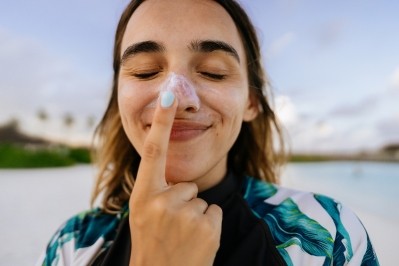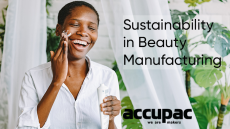Overcoming regulatory barriers in sun care: Key takeaways from dsm-firmenich's 3rd Annual Safer UNDER THE Sun Day

Innovation in sun care products is vital for enhancing skin cancer prevention and meeting evolving consumer needs. However, regulatory barriers and the slow approval process for new UV filters in the U.S. hinder progress. To discuss these challenges and potential solutions, we spoke with Carl D'Ruiz, Senior Manager of Science and Advocacy at Beauty & Care N.A., dsm-firmenich, following the organization's 3rd Annual Safer UNDER THE Sun Day.
In this Q&A, D'Ruiz shared key insights from the event, recommendations for regulatory reform, and the crucial role of industry-government collaboration in driving sun care innovation.
CDU: What were the primary goals for the 3rd Annual Safer UNDER THE Sun Day, and how did they build on the previous year's event?
CDR: dsm-firmenich’s 2022 Safer UNDER THE Sun Day (SUTS) commemorated its sponsorship of Destination Healthy Skin, The Skin Cancer Foundation’s mobile skin cancer education and screening program. During this event we raised the need for improved skin cancer awareness and received Congressional support in requesting OSHA to revisit the treatment of sunscreen as critical personal protective equipment for all outdoor workers.
This was followed by our 2023 SUTS event in which we asked Congress to provide the FDA with public resources so that they can develop and use new alternative testing methodologies to accelerate the introduction of novel UV Filter innovation to the marketplace – without sacrificing safety or efficacy.
The primary goals of this year’s SUTS event was to discuss the barriers to innovation that currently hinder the availability of new OTC sunscreen drugs for American consumers and the potential impact on skin cancer prevention and public health.
CDU: What were the significant insights shared regarding the current state of sunscreen innovation in the U.S.?
CDR: Significant insights were shared regarding the current state of sunscreen innovation in the U.S. One in five Americans will develop skin cancer by the age of 70, despite the fact that skin cancer is largely preventable. Consistent use of sun protection remains the strongest defense against this disease.
However, despite the Sunscreen Innovation Act of 2014 aiming to expedite the approval of additional UV filters in the U.S., the FDA has not approved any new filters since 1999. Many alternative cosmetic ingredients are safely evaluated using New Approach Methods (NAMs), a practice that would greatly benefit the UV filter market and help eliminate animal testing. While innovative companies are developing new UV filter ingredients, their research and capital investment are limited by the complex regulatory landscape for UV filters.
Any new UV filter ingredient must undergo a lengthy and costly NDA process for FDA approval, which discourages research, innovation, and investment in the U.S. This situation prevents ingredients aimed at protecting public health from entering the market and causes the U.S. to lag behind other global markets.
Consequently, the U.S. sun care industry is unable to innovate effectively to meet today’s consumers' needs and preferences for different skin tones and types.
CDU: Can you elaborate on the regulatory challenges the U.S. sun care industry faces, particularly concerning the approval processes for new UV filters?
CDR: The U.S. sun care industry faces several significant regulatory challenges, particularly regarding the approval processes for new UV filters. One of the primary issues is the lengthy and complex regulatory review and approval processes, which hinder the timely introduction of innovative products to the market.
Additionally, there is insufficient research funding for non-animal toxicological safety and risk assessment methods, which are crucial for evaluating new ingredients without resorting to animal testing. Moreover, the industry struggles with inadequate exclusivity provisions and data protection standards for OTC sunscreen drug innovation sponsors, which discourages investment and innovation.
These challenges collectively create a barrier to progress, stifling the development of new and more effective sun care solutions.
CDU: What are dsm-firmenich's recommendations for streamlining these regulatory processes?
CDR: Our recommendations for streamlining regulatory processes currently facing the U.S. sun care industry are as follows:
- Appropriations to fund research
- Encourage FDA to consider alternatives to animal testing
- Support stronger partnerships between government agencies and broad range of stakeholders
- Fast-track FDA approval for Time and Extent Application (TEA) ingredients sponsored under current OMOR Tier 1 OMUFA regulator scheme created by CARES Act and OTC reform.
CDU: What specific actions were discussed to advocate for increased Congressional funding for innovative testing methods?
CDR: dsm-firmenich recommends several measures to streamline the regulatory processes for sun care products in the U.S. Firstly, they advocate for increased appropriations to fund research, which would support the development of new UV filters and other innovations.
They also encourage the FDA to consider alternatives to animal testing, promoting the use of modern, ethical research methods. Furthermore, dsm-firmenich supports the establishment of stronger partnerships between government agencies and a broad range of stakeholders, fostering collaboration and efficiency.
Finally, they recommend fast-tracking FDA approval for Time and Extent Application (TEA) ingredients sponsored under the current OMOR Tier 1 OMUFA regulatory scheme created by the CARES Act and OTC reform, to accelerate the introduction of new, effective sun care products to the market.
CDU: How crucial is industry-government collaboration for overcoming barriers to sunscreen innovation, and can you share examples of successful industry-government collaborations highlighted at the event?
CDR: Industry-government collaboration is important for overcoming regulatory, research, and public health barriers to sunscreen innovation. Such partnerships ensure that innovative, effective, and safe sunscreens are developed and made available to consumers, ultimately contributing to better skin cancer prevention and public health outcomes.
Examples of Successful Industry-Government Collaborations:
- FDA and Sunscreen Innovation Act (SIA): The SIA, passed in 2014 in the United States, was a significant step towards enhancing sunscreen innovation. It was driven by collaboration between the government (FDA), industry stakeholders, and consumer advocacy groups. The act aimed to expedite the review of new sunscreen ingredients, which had been stalled for years. Although largely unsuccessful in getting new UV filters approved, this collaboration helped modernize the regulatory framework by having FDA identify the types of studies required for the introduction of new, potentially more effective sunscreen agents into the U.S. market.
- EU REACH Regulation: The Registration, Evaluation, Authorisation, and Restriction of Chemicals (REACH) regulation in the European Union: is an example of a comprehensive regulatory framework developed with significant industry input. REACH ensures that chemicals used in products, including sunscreens, are safe for human health and the environment. Continuous dialogue between the European Chemicals Agency (ECHA), industry stakeholders, and member state authorities has enabled a smoother implementation process and adaptation of regulations that support innovation while maintaining high safety standards and protecting data confidentiality.
- Australia’s National Health and Medical Research Council (NHMRC) Grants: The NHMRC in Australia has funded several research projects in collaboration with universities and the sunscreen industry to develop innovative UV protection solutions. These grants support the development of new sunscreen formulations, including those that offer broader spectrum protection and improved photostability. Such collaborations have led to advancements in sunscreen efficacy and safety.
- Japanese Government and Cosmetic Industry Collaboration: In Japan, the Ministry of Health, Labour and Welfare (MHLW) works closely with the cosmetic industry to ensure that sunscreen products meet rigorous safety and performance standards. Joint efforts have led to the development of sunscreens with superior protection and cosmetic appeal, meeting both regulatory requirements and consumer expectations.
CDU: What immediate actions or next steps were identified as crucial following this event?
CDR: Several immediate actions or next steps were identified as crucial following this event. Firstly, there is a recognized need to accelerate innovation within the UV filter space, acknowledging that animal testing poses a significant hurdle, along with the high costs associated with the approval process.
Additionally, there was a brainstorming session to explore ways to make progress with the FDA, particularly with the support of Congress, considering that previous efforts through letters have not been successful. Lastly, it was agreed to follow up with the relevant stakeholders as we proceed with our FDA OMOR Tier submission for the approval of Bemotrizinol (PARSOL® Shield).
CDU: How does dsm-firmenich plan to follow up on the discussions and insights shared during the event?
CDR: dsm-firmenich plans to follow up on the discussions and insights shared during the event by exploring possible appropriation vehicles to fund non-animal test alternatives. They also aim to support and continue encouraging the FDA to consider alternatives to animal testing by permitting "reasonable alternatives" for OTC drugs through appropriate bipartisan legislative vehicles, such as the proposed FDA 3.0 (H.R. 7248).
CDU: Could you provide more details about the recognition awards given to Members of the House Cancer Caucus?
CDR: An award was presented to Representative Deborah Ross (D-NC), who represents North Carolina’s second congressional district. Throughout her time in Congress, Representative Ross has been an unwavering champion and supporter of addressing and reducing skin cancer.
In addition to her excellent work as a co-chair of the Skin Cancer Caucus, Congresswoman Ross has shown to be an effective leader in the skin cancer prevention space – including working with a group of her colleagues to introduce a resolution supporting state, local, and community initiatives that encourage parents, teachers, camp counselors, and childcare professionals working with or caring for children to take the proper measures to prevent sunburn.
An award was presented to Representative Debbie Dingell (D-MI), who is serving her fifth term representing Michigan’s sixth congressional district, for joining us today. When we think of a champion for sunscreen and reducing the prevalence of skin cancer, we think of Congresswoman Dingell.
Since her election to Congress, Congresswoman Dingell has led the national conversation about bringing new and more innovative sunscreens to the United States market to ensure Americans are best protected from skin cancer. From her letter in 2015 raising concerns about the FDA’s backlog on sunscreens to her work leading the Over-the-Counter Monograph Safety, Innovation, and Reform Act to reform the over-the-counter monograph system – Congresswoman Dingell has been a true advocate.
How was the audience response during the Q&A session, and what were some of the most pressing questions or concerns raised?
CDR: The Q&A session highlighted two primary concerns regarding the state of the U.S. sunscreen market: stalled innovation and unmet consumer safety needs.
Annie Jackson, co-founder and CEO of Credo Beauty, discussed consumer behavior, noting that people often avoid using sunscreen because it can be difficult to apply and absorb. Sunscreen formulations from Europe and other parts of the world feel more like skincare products or facial lotions, whereas U.S. sunscreens are often heavy and can leave a white cast on the skin.
This leads to frustration and a dangerous situation where consumers skip sunscreen. Jackson also mentioned that Gen Z looks for products with SPF, indicating that consumers are educated but unable to find desirable formulations.
Dr. Jane Yoo, a Board-Certified Dermatologist and Mohs Surgeon, emphasized that patients and frustrated consumers will often purchase foreign products online from sources that cannot guarantee product quality or authenticity, often putting themselves at further risk with products that don’t deliver the SPF promised.
Regarding my concerns about the crisis, I shared that we are stuck in an innovation cycle based on the Monograph established in 1978, which was built on ingredients used before then... Science is dynamic and ever-changing, but the Monograph does not reflect this. For example, recent scientific evidence indicates that blue light and visible light, which are not covered under the Monograph, may contribute to skin cancer.
Dr. Henry Lim at the Henry Ford Foundation in Detroit has conducted studies demonstrating this. However, the FDA has not acknowledged this issue in the current monograph, and our outdated pre-1978 law hasn't kept up with current developments. We are working with an antiquated and faulty system that needs to be fixed or changed.
![Franz Skincare has developed patches that claim to offer broad-spectrum sun protection to address the challenge of sunscreen reapplication. [Franz Skincare]](/var/wrbm_gb_food_pharma/storage/images/_aliases/wrbm_medium/publications/cosmetics/cosmeticsdesign-asia.com/headlines/brand-innovation/k-beauty-sunscreen-patch-aims-to-solve-consumer-reapplication-challenges/17505190-1-eng-GB/K-beauty-sunscreen-patch-aims-to-solve-consumer-reapplication-challenges.jpg)









![Kosé Corporation accelerates North American expansion with a new Los Angeles flagship store. [Kosé]](/var/wrbm_gb_food_pharma/storage/images/_aliases/wrbm_tiny/publications/cosmetics/cosmeticsdesign-asia.com/headlines/business-financial/kose-us-amplifies-awareness-of-key-global-brands-with-new-experience-led-flagship-store/17496871-1-eng-GB/Kose-US-amplifies-awareness-of-key-global-brands-with-new-experience-led-flagship-store.jpg)





